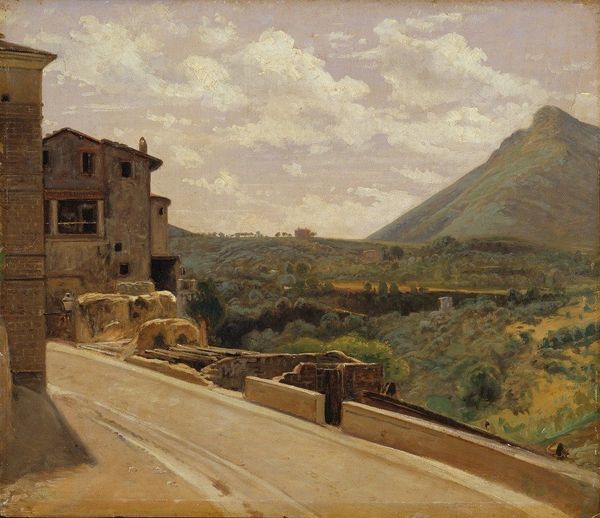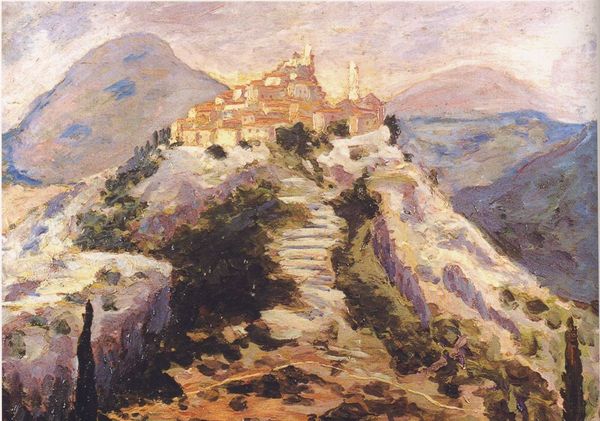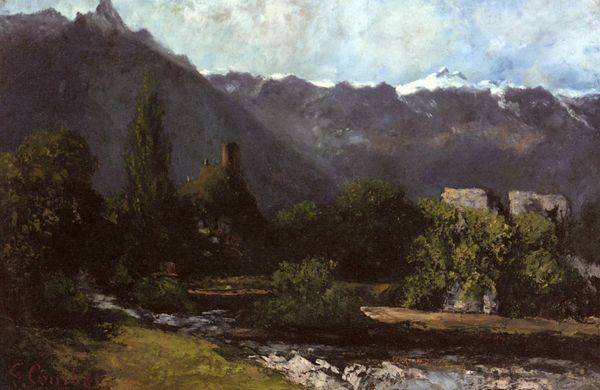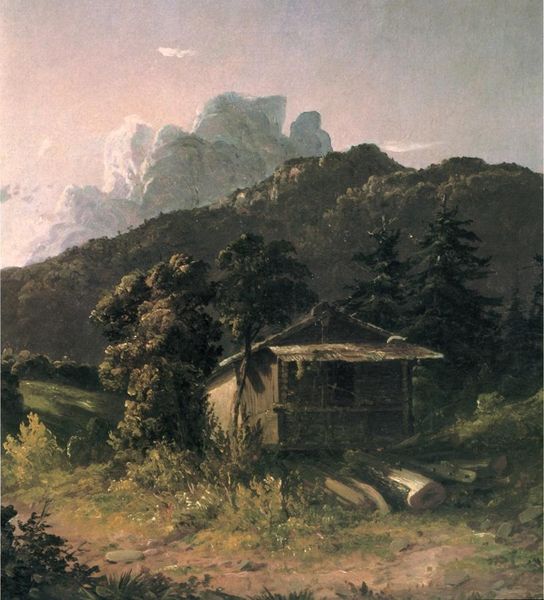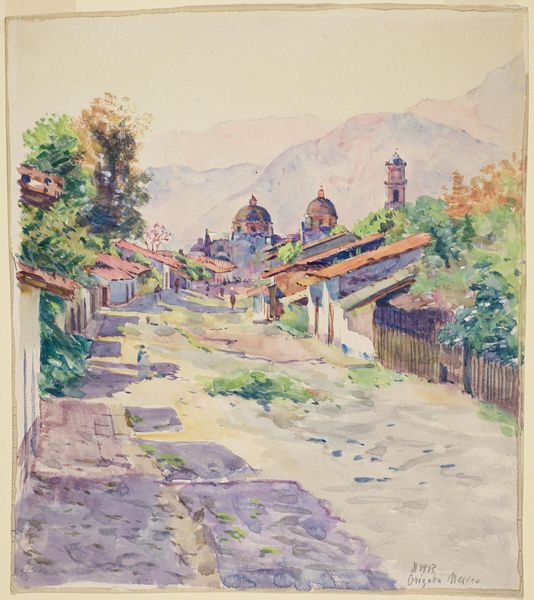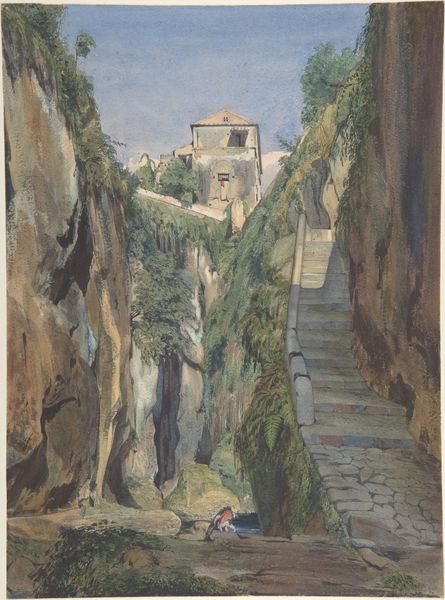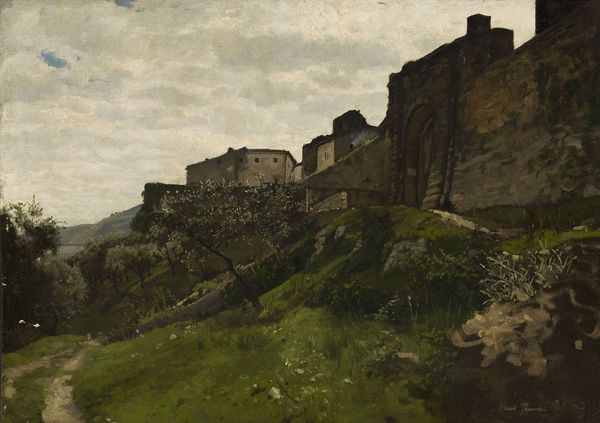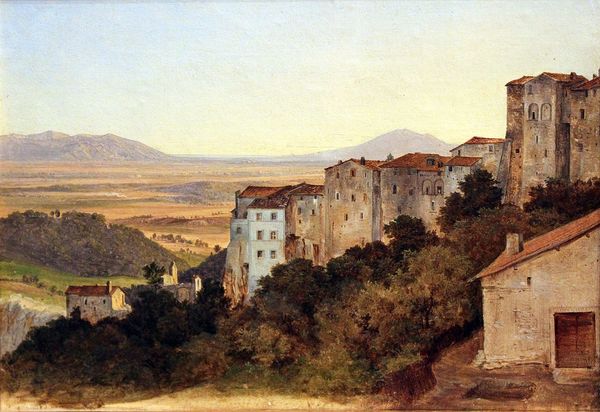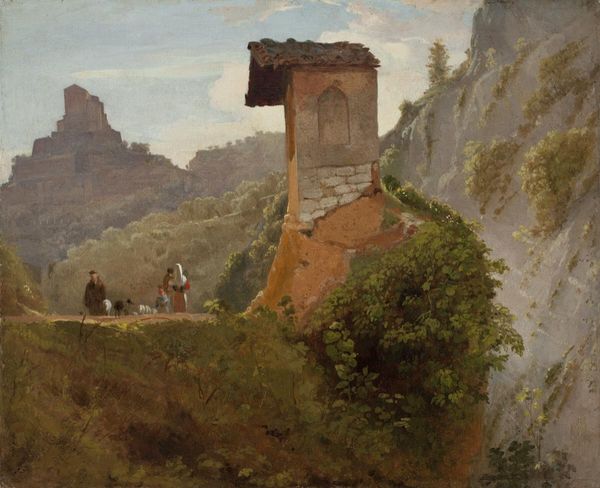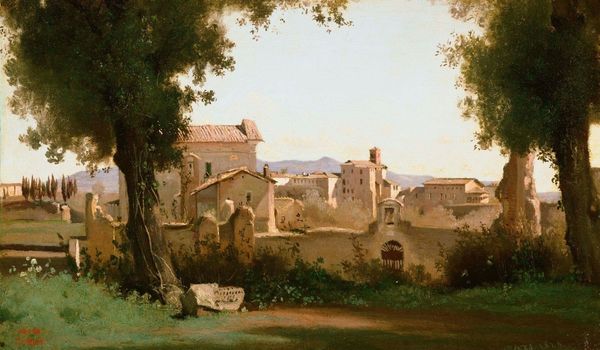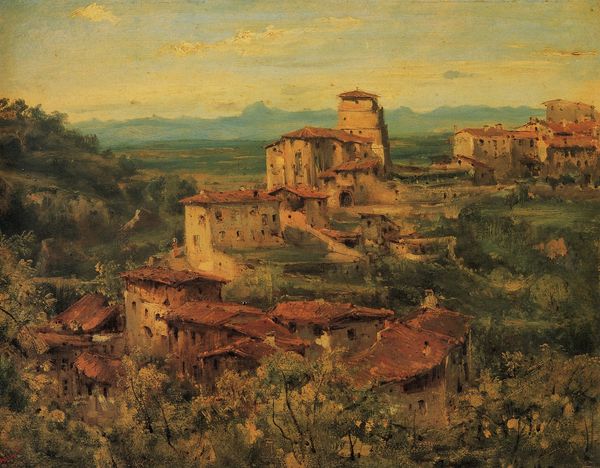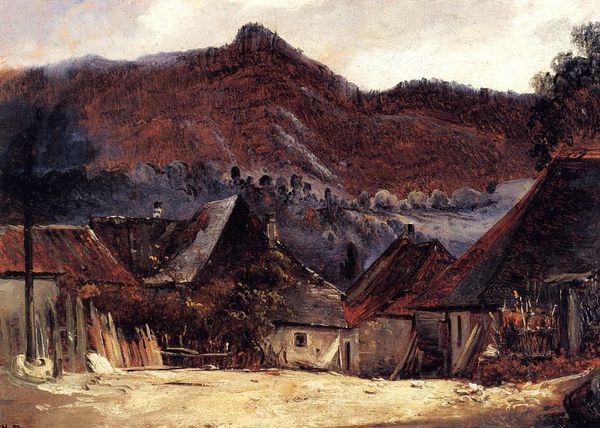
painting, oil-paint
#
painting
#
oil-paint
#
landscape
#
oil painting
#
cityscape
#
academic-art
#
realism
Copyright: Public domain
Editor: This is Ferdinand Georg Waldmüller’s “Pfamgasse in St. Wolfgang,” created in 1835. It's an oil painting depicting a street scene, and I’m struck by the way it contrasts the neat, orderly buildings on the left with the more rustic structures on the right. What do you see in this piece? Curator: I see a constructed binary deeply embedded within the social and political landscape of 19th-century Europe. The contrast isn't just aesthetic; it speaks to class division and the burgeoning industrial revolution. The “orderly” buildings likely housed merchants or administrators, reflecting the rising bourgeoisie, while the "rustic" structures probably belonged to laborers tied to the land, folks whose ways of life were being systemically dismantled. What impact do you think the composition of near and far had in representing the era? Editor: I hadn't considered the buildings as representative of different social classes! With that framework in mind, the mountain in the distance now feels almost like an indifferent observer, a static, natural presence juxtaposed against societal shifts. I hadn't really appreciated how complex and, really, sad this all is, just by glancing at it. How interesting! Curator: Precisely! The mountain can be interpreted as representing the old order, soon to be supplanted, indifferent to those historical changes in our social contracts. Consider too Waldmüller's meticulous brushwork—it lends a certain dignity even to the "rustic" side. Is he attempting to monumentalize a dying way of life? Is it, maybe, an early commentary on capitalist restructuring, masked as a simple genre painting? What social realities did his chosen perspective reveal? Editor: I suppose by showcasing these contrasts he’s drawing our attention to the inequities and highlighting the people affected by these massive societal changes. Thanks so much for this critical insight, I have a new framework with which to observe and analyse not just art, but societal transitions through art.
Comments
No comments
Be the first to comment and join the conversation on the ultimate creative platform.

